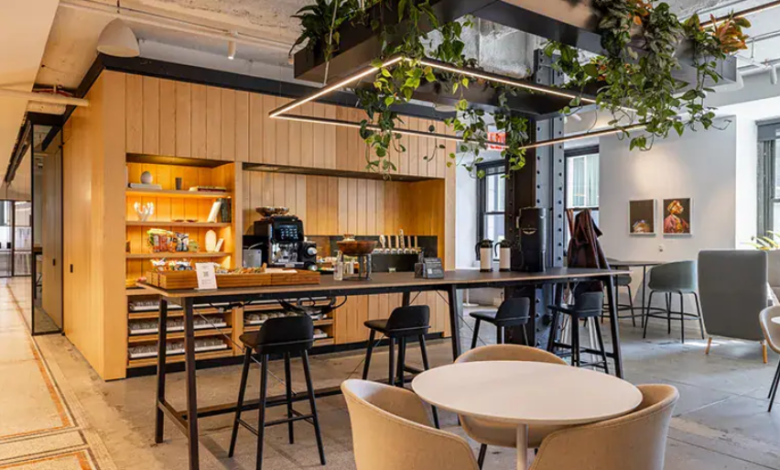Understanding Shared Office Space Pricing: A Practical Guide for Smart Businesses

The world of work has changed, and with it, the way we view office space. Today, flexibility and cost-efficiency are critical—especially for startups, freelancers, and remote teams. One model that continues to gain popularity is coworking, or more specifically, shared office space. However, a question many people ask before making the leap is: What does shared office space pricing actually include—and is it worth it?
This article breaks down what influences shared office space pricing what you can expect at different budget levels, and how to find the best value without compromising your productivity.
What Is Shared Office Space?
Shared office space refers to a professional work environment where multiple individuals or businesses share the same workspace infrastructure. These spaces often include hot desks, dedicated desks, private offices, and access to common facilities like meeting rooms, lounges, Wi-Fi, printers, kitchens, and even fitness areas.
Unlike traditional leases, users don’t commit to long-term contracts or invest in expensive infrastructure. You pay a flexible rate depending on your needs—and that’s where shared office space pricing becomes essential to understand.
Key Factors That Impact Shared Office Space Pricing
Coworking spaces are not priced based solely on square footage. A combination of tangible and intangible features shapes the final cost. Let’s explore the most influential elements.
1. Location, Location, Location
Urban centers like New York, London, Hong Kong, and Singapore often have premium pricing due to high demand, prime addresses, and business conveniences.
- City center = High visibility, great transport, higher price
- Suburban area = More space, lower foot traffic, lower cost
If you’re meeting clients often or need visibility, a central location may justify higher shared office space pricing. But if you prioritize quiet, cost-efficiency, or remote work, outer districts might be ideal.
2. Type of Workspace
Here’s a quick breakdown of common workspace options:
- Hot Desk: First-come, first-served seating in shared areas.
- Dedicated Desk: Your own desk in a shared room.
- Private Office: Enclosed space for your team.
Naturally, hot desks are the most affordable, while private offices carry a premium. Some providers even offer hybrid memberships, like 3-day-per-week access.
See also: Protecting Homes and Businesses with Professional Pest Control in Chelmsford
3. Amenities and Services
What’s included in your membership plays a big role in pricing. High-end spaces often bundle services such as:
- High-speed Wi-Fi
- Printing and scanning
- Lockers or storage
- Front desk/receptionist
- Coffee, snacks, or beverages
- Networking events or seminars
- Access to multiple locations
The more perks you need, the higher your shared office space pricing will be.
4. Time Commitment
Are you renting by the hour, day, week, or month? The longer the term, the lower the cost per unit of time. Month-to-month plans are common, but some providers offer discounts for 6- or 12-month commitments.
5. Brand and Community Experience
Established coworking brands like WeWork, Regus, and The Executive Centre may charge more, but they often provide premium interiors, global access, and curated networking opportunities. Lesser-known or local spaces may be more affordable but might lack community programs or global reach.
Typical Pricing Ranges by Workspace Type
To give a better idea of the market, here are average global monthly rates for different types of coworking setups (USD):
| Workspace Type | Budget Range (USD/month) |
| Hot Desk | $100–$350 |
| Dedicated Desk | $250–$600 |
| Private Office | $500–$2,500+ |
Note: Prices fluctuate based on city, space provider, and package inclusions.
For example, in downtown Hong Kong, a hot desk may cost HK$2,000 (approx. $250 USD), while a private office for a small team can exceed HK$20,000 per month.
Shared Office Space Pricing: Hidden Costs to Watch For
While pricing may seem straightforward, some shared office spaces include hidden charges that can inflate your monthly spend. Always read the fine print before signing up. Watch out for:
- Meeting room rental fees (usually charged hourly beyond allocated credits)
- Printing quotas (e.g., 100 pages free, then $0.10 per page)
- Locker or storage rental
- Late payment fees
- Access fees for other locations
Ask for a full cost breakdown so there are no surprises later.
Shared Office Space vs Traditional Office: A Cost Comparison
Let’s compare shared office space pricing with the typical costs of setting up a conventional office.
| Feature | Shared Office Space | Traditional Office |
| Furniture | Included | Buy or lease |
| Internet + Utilities | Included | Separate bills |
| Office Equipment | Shared access | Must purchase |
| Lease Duration | Flexible (monthly) | Long-term (1–3 years) |
| Deposit Required | 1 month | 3–6 months |
| Maintenance | Managed by provider | Tenant responsibility |
| Scalability | Easy (add/remove desks) | Limited |
While shared office pricing may seem slightly higher month-to-month, the overall cost of ownership is usually lower when you factor in upfront setup, furniture, and operating costs.
Tips for Getting the Best Value
1. Assess Your Real Usage Needs
If you only need 2–3 days per week, don’t pay for full-time access. Many spaces now offer flexible membership tiers.
2. Trial Before You Commit
Take advantage of trial days, free tours, or one-month memberships before committing long term.
3. Negotiate for Perks
Some providers will throw in extra printing credits, locker space, or discounted meeting room hours if you ask.
4. Ask About Partner Discounts
Some coworking spaces partner with banks, software tools, or insurance providers—ask what deals are included.
5. Consider the Community
Look beyond cost. A vibrant community can offer networking, learning, and collaboration opportunities that increase your ROI beyond dollar value.
Real-World Example: Scaling with Shared Space
Amira, a freelance consultant based in Dubai, started working from home but found it isolating. She explored a coworking space that charged $250/month for a hot desk. After a few months, she gained two clients through contacts she met there.
Eventually, she grew her team and moved into a 4-person private office within the same building for $1,200/month. Had she rented a traditional office, her monthly cost would have exceeded $2,500 after adding utilities, furniture, and insurance.
This shows how shared office space pricing allows businesses to scale up or down depending on needs—without high risk.
Final Thoughts: Is Shared Office Space Worth the Price?
The answer is almost always yes—if you choose wisely. When you factor in the benefits of lower startup costs, flexibility, included amenities, and community access, shared office space pricing is one of the smartest investments a small business or solo professional can make.
Just remember to look beyond the base rate. Understand what’s included, assess your real needs, and don’t be afraid to negotiate. Whether you’re freelancing, starting a tech company, or expanding internationally, the right shared office can be the launchpad to your next level of growth.





